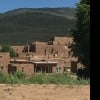Heidelberg, Germany -- a beautiful city located in the Black Forest
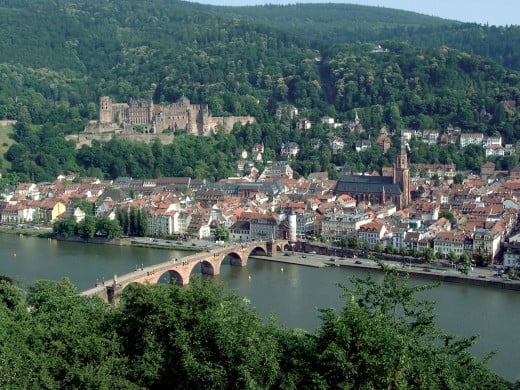
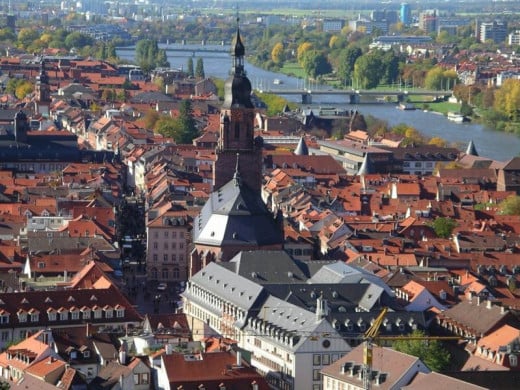
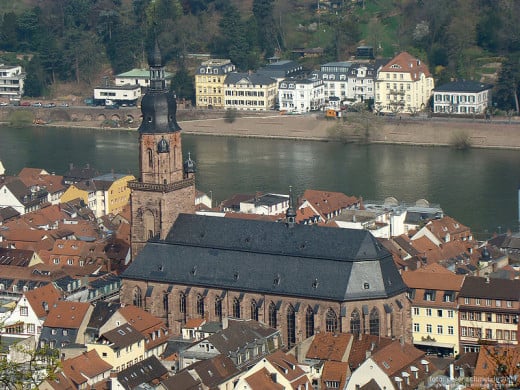
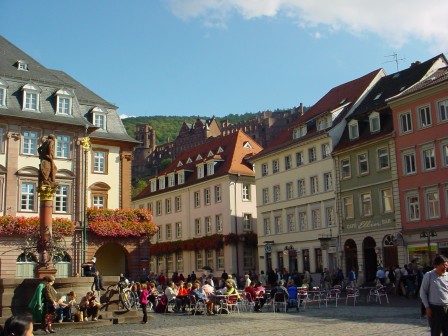
Heidelberg, Germany - founded 1196
Off the beaten Romantic Road in Germany, located in southwest Germany, and nestled deep in the Schwartzwald, or Black Forest of Germany, is the lovely university town of Heidelberg, Germany. It sits along the River Neckar and is the cradle of Romanticism. Its "Old Town" and castle are the most frequented tourist destinations in Germany. It is only a forty minute train ride from Frankfurt, Germany and even closer by car.
Heidelberg is located in the German state of Baden-Wurttemberg and has a population of approximately 150,000 people. It is a romantic and picturesque city that is the home of Heidelberg University, the Heidelberg Castle and the baroque style Altstadt, or Old Town.
The founding date of Heidelberg has been established as 1196, one of the oldest cities in Germany, as Heidelberg is first mention in that year in a document in Schonau Abbey. The magnificent, sprawling castle was originally constructed in 1303 for defense of the city.
The Altstadt, or OldTown of the city is constructed in the baroque style of architecture and makes for a beautiful, elegant city. The Old Town is located on the south bank of the River Neckar and is long and narrow and overlooked by the ruins of Heidelberg Castle that looms above. The Hauptstrasse, or Main Street, is a mile long pedetrian street running the length of the town. It has become Heidelberg's shopping and night life magnet for natives, tourists, and university students.
The Old Stone Bridge built in 1786-1788 spans the River Neckar and links the two sides of the city together. It has a medieval bridge gate that is on the side of the Old Town that was originally part of the Old Town wall.
In the markplatz, or marketplace, sits the Church of the Holy Spirit constructed in late Gothic style. It connects with the pedestrian walk. Across the street from the church is the House zum Ritter Sankt Georg (Knight St. George) and is one of the few original buildings that survived the War of Succession.
The Philosophenweg, or Philosopher's Walk, is on the northern side of the River Neckar. Traditionally , Heidelberg's philosopher's and university professors would walk and talk along the pathway. Great thinkers and great minds honed the lessons at the university for their students. Today, it provides scenic views of the town and the castle for photographers. Also, situated here are the Physics and Astronomy faculties and schools of the University of Heidelberg. Farther up the mountain is found the ruined 11th century Monastery of St. Michael.
The Heidelberg Castle is, of course, the highlight of this city. Originally built in 1303, it was destroyed in a gunpowder explosion iin 1537. It was rebuilt at that point as the duke's palace and has been watching over Heidelberg since then. There are more than 300 steps to climb up to see the castle, so it is not a trip for the faint-hearted. I have climbed up these stairs to the castle and I can tell you it is worth the climb. The romantic castle is sprawling but beautiful and the architecture is not to be missed. The panoramic view of the city is breathtaking and another haven for photographers. The charming Old Town is completely visible from the top at the castle with the Old Stone Bridge and the River Neckar.
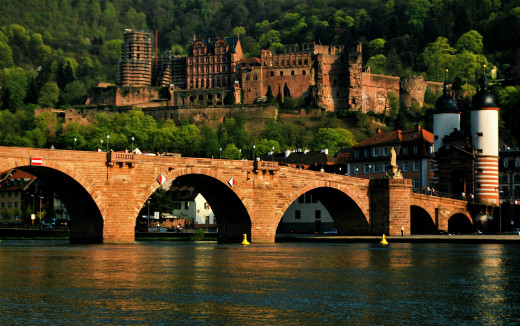
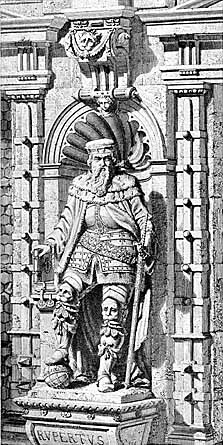
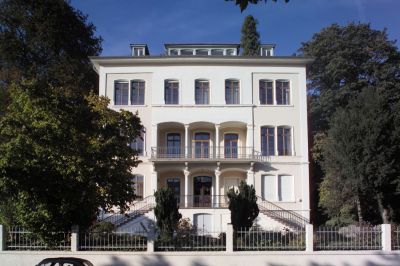
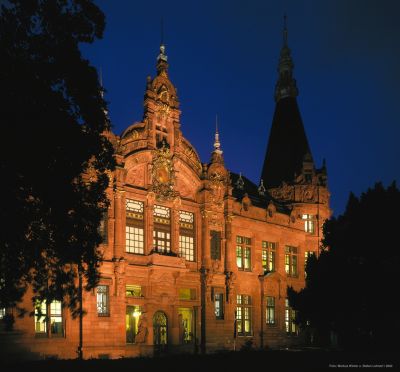
The University of Heidelberg - founded 1386
The city of Heidelberg, Germany is known for its institutions of higher education and Heidelberg University, founded in 1386, is the most famous of those and one of Europe's oldest educational institutions. Heidelberg is also the oldest university town in all of today's Germany.
It was originally founded by Rupert I based on a Papal Bull to found the university by the pope of the Holy Roman Empire. So Rupert had the school built and it served as a center for theologians and law experts throughout the Holy Roman Empire. It became a center of independent thinkers, a stronghold of humanism, and a center of democratic thinking.
By the later 15th century, Heidelberg University transitioned from a scholastic to a humanistic culture completed by chancellor and bishop Johann von Dalberg. During the time of the Reformation of the Catholic Church, Martin Luther gave his defense of his 95 Theses at Heidelberg University in April 1518. This had a lasting impact on the university and Luther's followers among the masters and scholars soon became leading Reformationists in southwest Germany.
The university played a leading role in the conflict between Lutheranism and Calvinism in the 15th and 16th centuries. From this, Heidelberg university became a university of humanism and Calvinism as the predominate schools of thought. Heidelberg University attracted scholars from all over Europe and it developed into a cultural and academic center.
With the Thirty Year's War, its intellectual and fiscal wealth declined and the decline did not stop until 1803. In this year Heidelberg University was re-established as a state-owned institution by Karl Friedrich, Grand Duke of Baden. Also romanticism found expression in Heidelberg University thought and there was a revival of the German Middle Ages in speech, poetry and art.
Later in the 19th century, it became a role model for the implementation of graduate schools and the scientific method used at American universities. The university as a whole becanme the role model for the transformation of American liberal arts colleges into research universities particularly Johns Hopkins University in Baltimore, MD, as an example.
During the Nazi era and World War II (1933-1945), Heidelberg University was closed down and marked an NSDAP university. After WWII, it literally went through an extensive denazification program. By the 1970s, left wing students at the university protested especially against the U.S. military bases and missiles planted in Germany.
The modern scientific psychiatry, psychopharnacology, psychiatric genetics, environmental physics of modern sociology were introduced as scientific disciplines by the Heidelberg faculty. The emphasis at Heidelberg University is on research and it has fifty-five Nobel Prize laureates who taught and conducted research at the university. Today, it ranks among Europe's top overall universities. It is an international education detination for doctoral students and one third of the doctoral stufents come from abroad. Roughly one thousand doctorate degrees are completed there each year.
There are two separate campuses within Heidelberg University. The Old Town Campus houses the humanties and social sciences. The New Town Campus, on the outskirts of Heidelberg, houses the sciences and medical school plus three large university hospitals.
Heidelberg University has been co-educational since 1899 and today there are twelve faculties and degree programs in undergraduate, graduate and postdoctoral levels in one hundred disciplines.
And, don't forget, Heidelberg University and the city were the setting for the operetta, "The Student Prince," by Sigmund Romberg and based on Wilhelm Meyer-Forster's play, "Old Heidelberg." The operetta is performed each summer at the Heidelberg Castle Festival and is delightful and charming to see.
Related links
- Heidelberg University
- Reviews of Hotels, Flights and Vacation Rentals - TripAdvisor
TripAdvisor - Unbiased hotel reviews, photos and travel advice for hotels and vacations - Compare prices with just one click. - Heidelberg, Germany visitor attractions - what to see and do
Heidelberg, Germany visitor attractions - what to see and do during your visit
